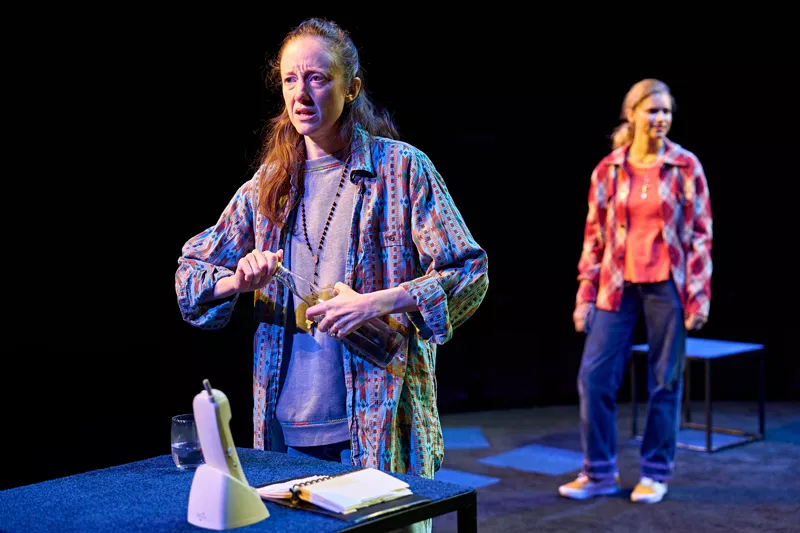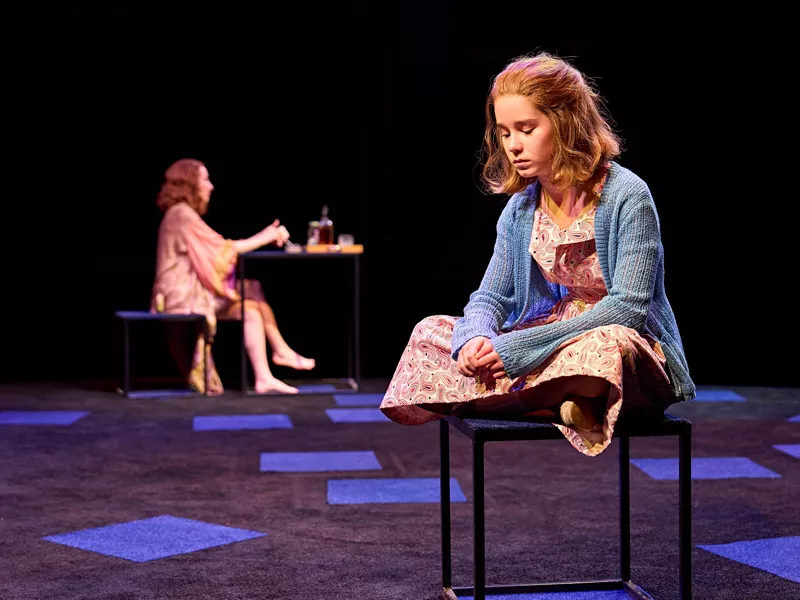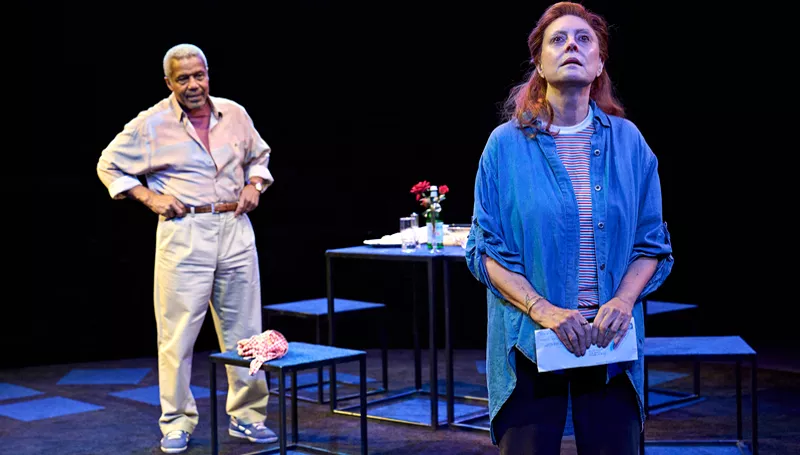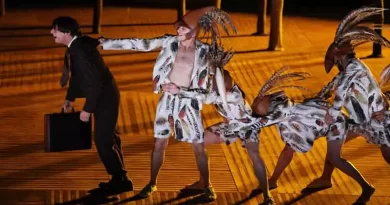“Mary Page Marlowe” at the Old Vic
Jane Edwardes on the South Bank
12 October 2025
★★★☆☆
Thirty years ago, audiences were horrified by the menace of the American trailer-park characters in Tracy Letts’s Killer Joe. Bug followed shortly afterwards with its now topical theme of conspiracy theories. By the time that August: Osage County opened at the National Theatre in 2008, having already won both a Pulitzer Prize and a Tony Award, we knew, despite his first name, that Letts was a man not a woman, and one capable of holding the stage with some monstrous characters, especially Ivy, the sozzled matriarch who lacerates her family, while ironically suffering from cancer of the tongue.

Andrea Riseborough and Clare Hughes.
Photo credit: Manuel Harlan.
Despite the huge success of August, Letts’s Mary Page Marlowe, first staged in 2016, has taken a long time to come to London. Its arrival now is made doubly eventful by the fact that Hollywood star Susan Sarandon has crossed the Atlantic to make her debut stage appearance in the UK at age 79, while Andrea Riseborough is returning to the stage after a long absence.
Letts has chosen an ingenious fashion with which to explore who we are and how little we know about ourselves, let alone how much other people know about us. We can be a mystery even to our family and closest friends. The life story of the titular character, born in the 1940s, is played out by five actresses and one doll, but the catch is that the play dips in and out of that life in a non-linear fashion.
So, in the first scene Riseborough’s 40-year-old Mary is explaining to her two children that she and their father are separating and that they will be moving from Dayton, Ohio to Kentucky, much to the daughter’s disgust. Immediately afterwards, we see Eleanor Worthington-Cox’s Mary as a student dreaming of a life of adventure and eschewing marriage altogether. Already, we know that her life is not going to work out as she plans. Later, Sarandon plays Mary from 59, when she appears to be much more at ease with herself, and her husband (her third) mystifyingly refers to her as a jailbird before we find out why.
Why would you choose to tell someone’s story in this disjointed fashion? The scenes are short, and it is hard to feel emotionally engaged. Instead, there is a certain objectivity as one tries to piece the life together, to confirm which one of the characters is Mary, and at what stage of her life we are watching. Frustratingly, there is plenty of useful information that Letts leaves out, as if he is determined that we should work it out for ourselves.

Eden Epstein (foreground).
Photo credit: Manuel Harlan.
As in the characters’ lives in August, Mary’s is not short of drama: two divorces, alcoholism, affairs, a disappearing son, and a spell in jail for drunken driving. It’s a crowded life, almost melodramatically so, and fewer events and more depth might make for a more powerful play. While many people’s lives are indifferent to the politics of the time, nevertheless we are all affected by cultural shifts. Here, costumes provide a sense of period, and technological advances are witnessed, but there is little sense that the nature of women’s lives might have changed, which was such a dominant feature of the recent adaptation of Annie Ernaux’s The Years, which also followed, more successfully, a woman’s life over a similar period.
If the play is often unconvincing, the actors are magnificent, providing a nuance and depth that doesn’t seem to be there in the writing. Matthew Warchus’s taut production is in the round, meaning that almost everyone in the audience is close to the action. Inevitably, the evening is dominated by Riseborough and Sarandon who have three scenes apiece. Riseborough is first seen giving evasive answers as she tries to explain to her two children why she and her husband (who we never see) are separating, making the harsh comment, “It’s not a tragedy. Nobody has died.” In her further two scenes, the raw emotion, tension, and devastating dependence on the bottle is etched on her face, especially when she has been arrested for drunken driving and expresses a mix of despair, anger, and shame.
Sarandon, who has a tremendous presence onstage, has less to do as the older, presumably now non-drinking Mary, a woman of tolerance and good humour, who gently teases a nurse about her tribe of children. It is hard to join the dots between Riseborough’s despairing Mary and that of Sarandon’s serene older lady. There is surely a scene missing there that would add to the play’s conviction.
Rosy McEwen is also excellent as an evasive Mary in her 20s and 30s, trying and failing to explain her compartmentalized life to her therapist and why she is having numerous affairs despite her lack of sexual desire.
Is it chance or destiny that dictates the events in Mary’s life? How much is her alcoholic mother and absent father responsible for her own drinking and struggles with her children? Sarandon’s Mary describes the satisfaction of being a tax accountant who works with a box of receipts and builds up a portrait of her clients. She also talks of taking a delicate quilt to the dry cleaners – there are squares of light to suggest the quilt on the floor in Rob Howell’s otherwise minimal set – that has been put together over the decades. That same quilt is piled on a table at the start of the evening.
We get the point. People’s lives are fractured, taking turns that are mysterious and hard to understand. Theatre sometimes gives us the opportunity of seeing deep into the characters’ souls, but Letts, frustratingly, prefers to keep us guessing.









